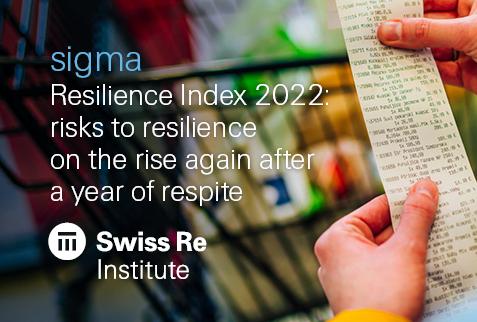Sigma - Resilience Index 2022: risks to resilience on the rise again after a year of respite
The world economy regained macroeconomic resilience in 2021, benefiting from the cyclical rebound from the COVID-19 crisis and rising long-dated interest rates during the year. However, we estimate that the resilience lost in the 2020 COVID-19 crisis will only be recouped this year, and any economic deterioration in the coming months may throw the recovery off course.
The recovery in macroeconomic resilience in 2021 was supported by strong improvements in fiscal space, but advanced economies made less monetary policy space gains after falling behind the curve in tightening monetary policy. Structural macroeconomic indicators such as human capital and labour market efficiency continue to weigh on resilience, particularly in emerging markets. We estimate that this year, cyclical economic tailwinds will further support fiscal space, while central bank action to tame persistent inflation will expand monetary policy space.
Global insurance resilience recovered in 2021, primarily due to strong improvement in health resilience, which offset weaker mortality and natural catastrophe resilience. However, insurance resilience overall is still lower than prior to the COVID-19 shock and the global financial crisis. The combined world protection gap for health, mortality and natural catastrophe risks rose marginally to a new record of USD 1.42 trillion in 2021. While insurance protection is still growing strongly in 2022, we expect scaled-back government benefits and declining asset values to erode insurance resilience overall.
Simulating how high inflation may affect protection gaps, we estimate that price increases in 2022 could translate into a 3.8% widening in the global insurance protection gap for 2021.
"The cyclical recovery in both macroeconomic and insurance resilience in 2021 cannot hide the fact that deep structural reforms are still needed to drive long-term growth. To secure greater resilience and support long-term economic stability, structural parameters such as infrastructure and human capital need to be strengthened and inequality reduced."
Jerome Jean Haegeli, Group Chief Economist, Swiss Re

